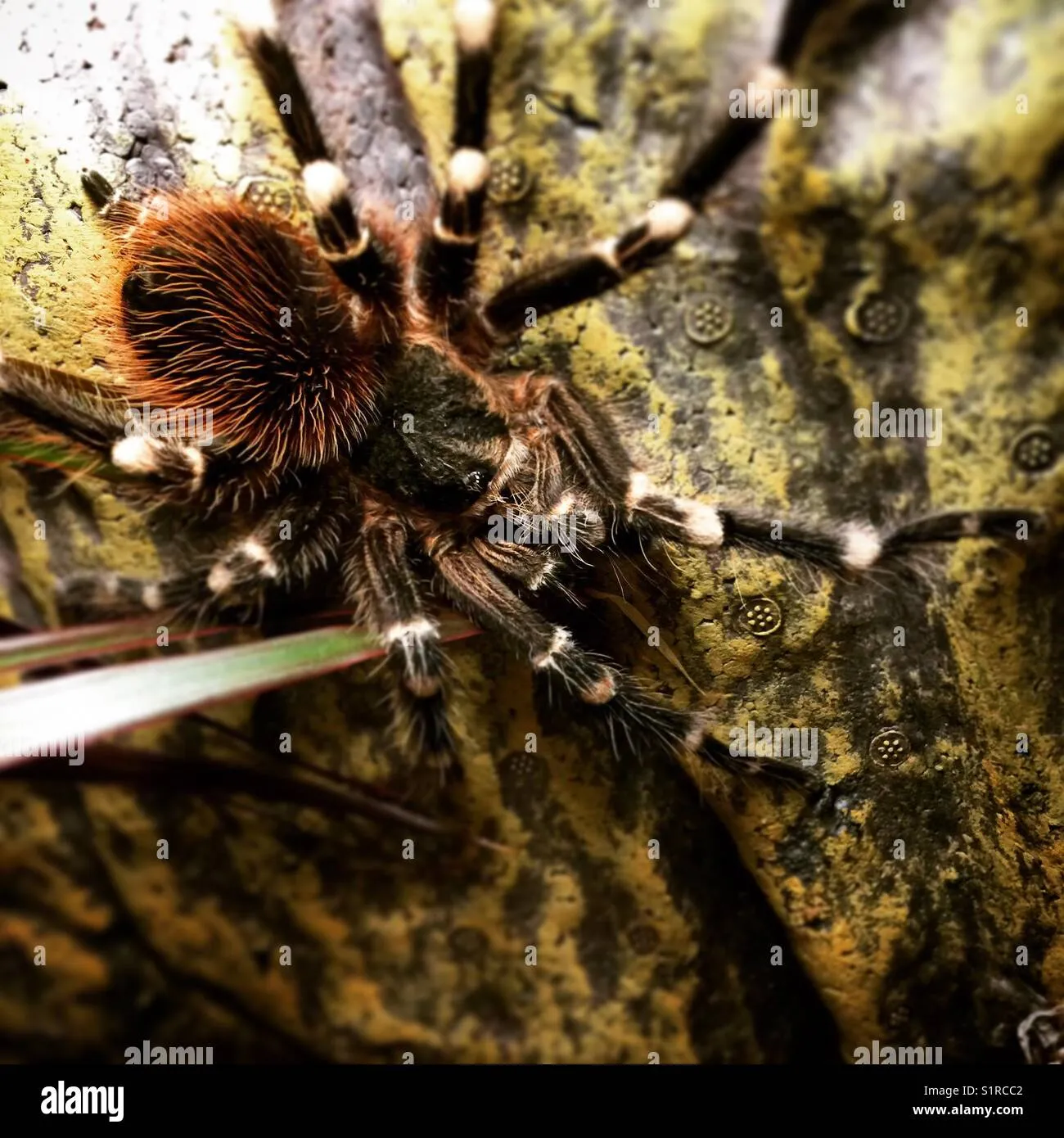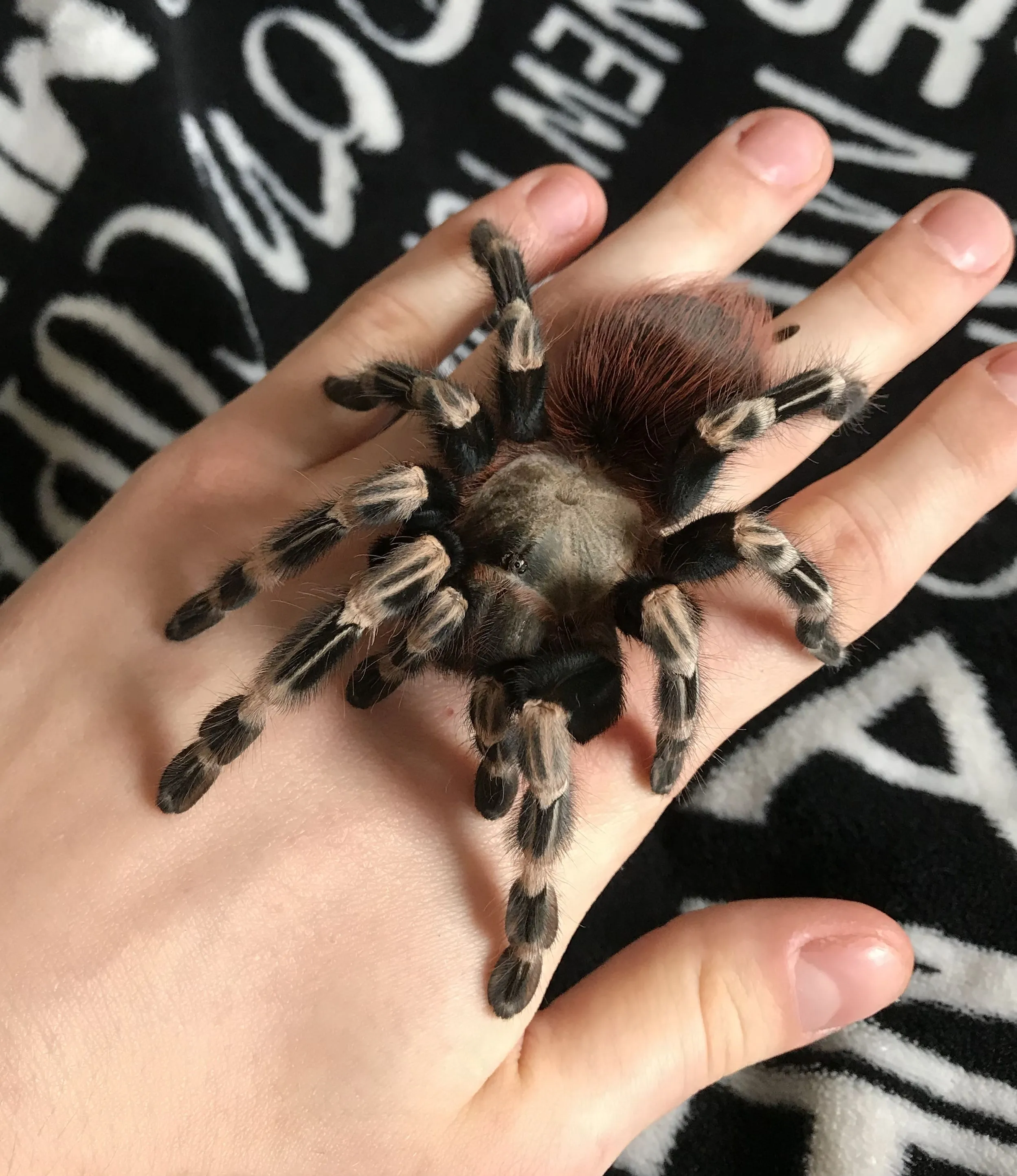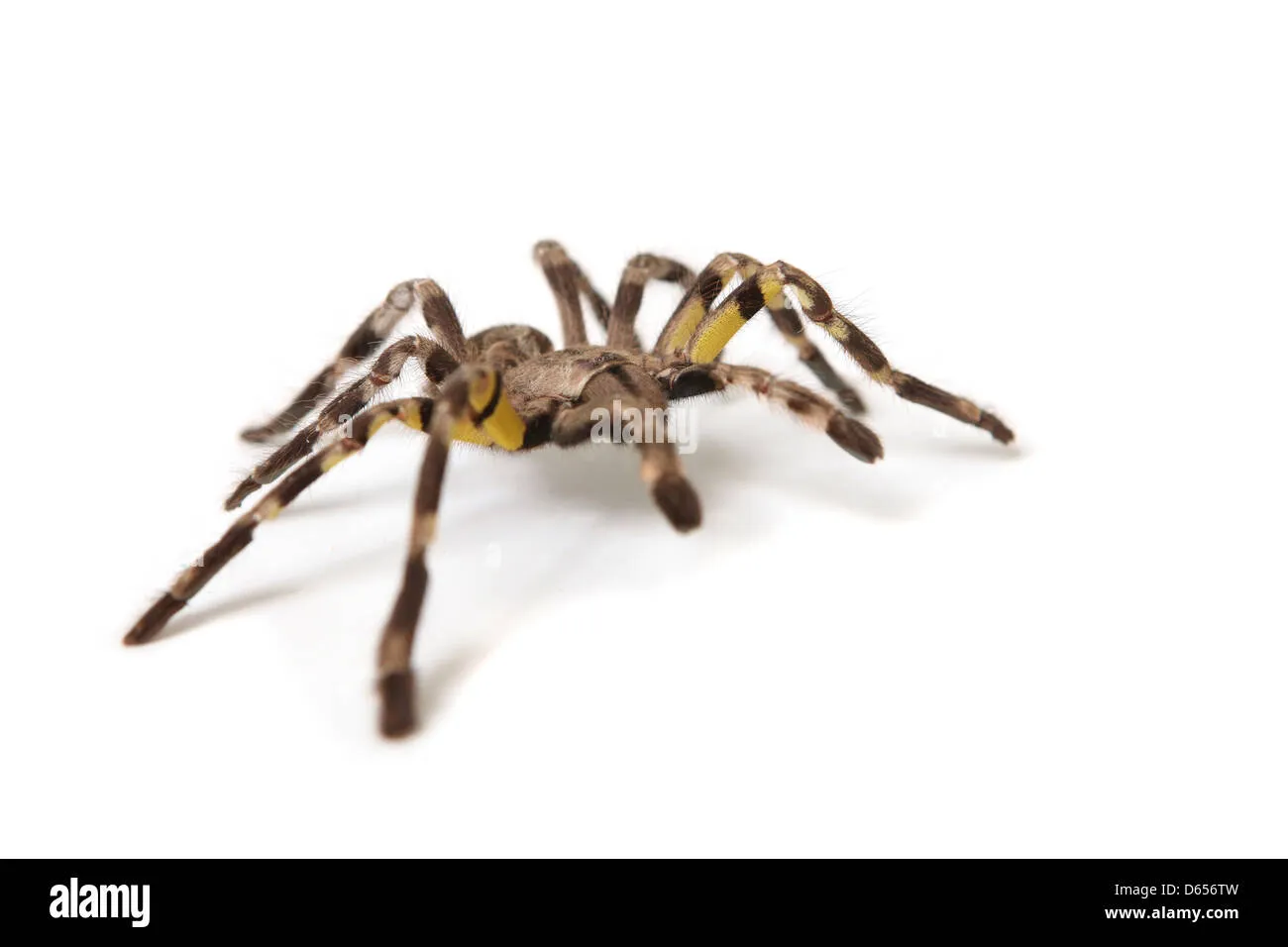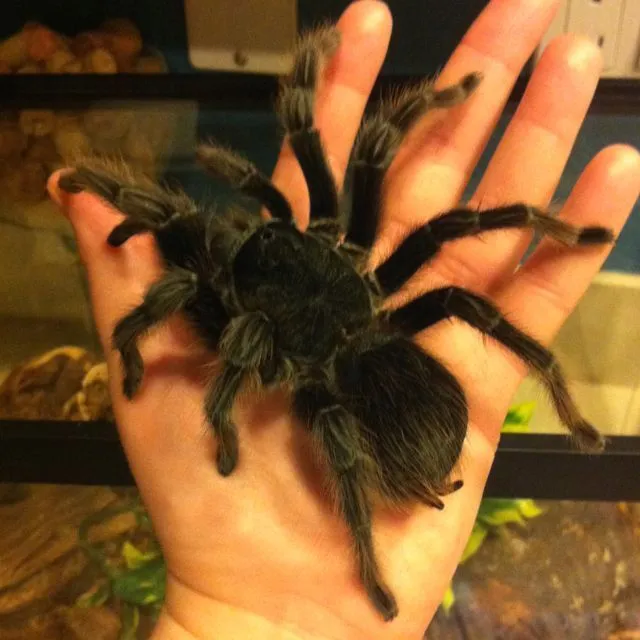Top 5 Amazing Facts About Tarantulas as Pets
Thinking about getting a tarantula as a pet? These fascinating creatures have gained popularity as captivating companions for those seeking something different. While they may seem intimidating at first glance, tarantulas offer a unique pet ownership experience. This article delves into five amazing facts about tarantulas, helping you understand why they’re becoming a favorite among exotic pet enthusiasts. From their impressive longevity to their manageable care requirements, discover what makes these eight-legged wonders such intriguing pets. Prepare to be amazed by the world of tarantulas, and perhaps, you’ll find yourself drawn to these captivating creatures. Owning a tarantula is not just about having a pet; it’s an adventure into the fascinating world of arachnids.
Tarantulas Have a Long Lifespan
One of the most remarkable facts about tarantulas is their extraordinary lifespan. Unlike many other pets, tarantulas can live for a considerable amount of time, offering a long-term companionship that few other pets can match. Female tarantulas, in particular, often outlive their male counterparts by a significant margin. Some species can live for over 20 years in captivity, making them a commitment that spans many years. This longevity makes them a unique pet choice for those who are prepared to provide long-term care and enjoy a lasting bond. This characteristic distinguishes them from more common pets like hamsters or goldfish, providing a sense of continuity and connection. When choosing a tarantula, consider the long-term commitment, knowing that your pet may be a part of your life for a very long time.
The Different Species of Tarantulas

The world of tarantulas is incredibly diverse, with hundreds of species found across the globe. Each species boasts unique characteristics in terms of size, color, temperament, and care requirements. From the vibrantly colored to the more subdued, there is a tarantula to suit a variety of preferences. This diversity allows prospective owners to choose a tarantula that best fits their lifestyle and experience level. Researching the various species is crucial before bringing one home, as each requires specific environmental conditions and care. Whether you’re drawn to the gentle giants or the more petite species, understanding the variety available is the first step in responsible tarantula ownership. Here are some popular species to consider:
Brazilian Giant Blonde
The Brazilian Giant Blonde (Lasiodora parahybana) is one of the largest tarantula species, known for its impressive size and relatively docile temperament. This species can grow to over 10 inches in leg span, making it a visually stunning pet. They are generally considered to be a good choice for intermediate keepers due to their size and potential for defensive behaviors. Brazilian Giant Blondes require a spacious enclosure and a diet of insects. Their imposing size and striking appearance make them a captivating addition to any collection. Proper handling and care are essential to ensure the well-being of both the tarantula and its owner.
Mexican Red Knee
The Mexican Red Knee (Brachypelma hamorii) is perhaps one of the most recognizable and popular tarantula species. Known for its striking black and orange coloration, the Red Knee is relatively docile and often recommended for beginners. Their beautiful appearance and manageable size make them a favorite among tarantula enthusiasts. They have a slower growth rate than some other species, adding to their appeal as a pet. They require a moderately humid environment and a diet of insects. They’re a great way to begin on a tarantula pet journey, their gentle nature and beautiful looks making them an ideal choice for new keepers.
Chilean Rose

The Chilean Rose (Grammostola rosea) is another popular species, particularly favored for its relatively calm temperament and ease of care. This species is a good option for beginners due to their generally docile nature and tolerance for a range of conditions. They are smaller than some other species, making them a great option for those with limited space. Chilean Roses are known for their calm disposition and can often be handled with minimal risk. They require a moderate humidity level and a diet of insects. Their relatively low maintenance makes them a wonderful introduction to the world of tarantulas. Their ease of care, beautiful looks, and manageable size make them perfect for beginners.
Tarantulas are Low-Maintenance
Compared to many other pets, tarantulas are surprisingly low-maintenance. They don’t require daily walks, extensive grooming, or constant interaction. Their primary needs involve a suitable enclosure, a consistent supply of food, and the maintenance of appropriate environmental conditions. This makes them an ideal pet for individuals with busy lifestyles or those who prefer a more independent companion. Once their habitat is set up correctly, their daily care is relatively simple, usually involving feeding and spot cleaning. Their low-maintenance nature does not mean they require no care, but they offer a level of convenience that other pets cannot match. They offer a manageable pet ownership experience, making them a perfect match for busy individuals.
Tarantulas Can Be Handled
While not all tarantulas enjoy being handled, many species can be safely handled with proper precautions. Handling a tarantula provides an opportunity to observe and interact with your pet in a more direct way. When handling, it’s essential to be gentle and move slowly to avoid startling the tarantula. Always handle them close to the ground to minimize the risk of injury if they were to fall. Certain species are known to be more docile and amenable to handling than others. Research the temperament of your specific species and always prioritize the tarantula’s comfort and safety. When handling a tarantula, it’s also important to be aware of their defensive behaviors, such as flicking urticating hairs. When handled with care, the experience can be both rewarding and educational.
Tarantulas are Quiet Pets

One of the most appealing aspects of owning a tarantula is their quiet nature. Unlike pets that can be noisy, such as dogs or birds, tarantulas are virtually silent. This makes them a great option for those living in apartments or for people who are sensitive to noise. Their quiet disposition means they don’t disrupt the peace and quiet of the home, and their presence is easily integrated into your daily life. This quiet aspect of tarantula ownership is a significant advantage for those seeking a low-key pet. They provide companionship without the typical noise associated with other pets. This makes them a convenient and enjoyable pet for a wide range of owners.
Are Tarantulas Right for You?
While tarantulas offer numerous advantages as pets, it’s important to consider whether they are the right fit for you. Like any pet, tarantulas require a commitment to their care and well-being. This includes providing a suitable habitat, a proper diet, and regular maintenance. Understanding the specific needs of the species you choose is crucial for ensuring their health and happiness. Consider your lifestyle, your level of experience with exotic pets, and your ability to provide the necessary care. Researching tarantula care thoroughly before acquiring one is crucial. Evaluating your expectations and capabilities will help determine if owning a tarantula aligns with your lifestyle and responsibilities. Are you ready for the long-term commitment and specialized care requirements? If so, a tarantula can be a rewarding and fascinating pet.
Considerations Before Getting a Tarantula
Before bringing a tarantula home, there are several important considerations to take into account. Firstly, research the specific species you’re interested in. Understand their unique care requirements, including habitat, temperature, humidity, and diet. Ensure you can provide the appropriate environment to meet their needs. Secondly, consider your personal comfort level with insects and arachnids. Handling and feeding tarantulas involve interacting with insects, which may not be suitable for everyone. Lastly, consider the potential for allergies. Some people are allergic to tarantula hairs or bites, so it’s wise to be aware of such risks. Evaluating these factors will ensure you are well-prepared for the responsibilities of owning a tarantula. These factors help you create a fulfilling and enjoyable pet ownership experience.
Tarantula Housing

Providing the right housing is essential for a tarantula’s well-being. The enclosure should be appropriately sized for the species, allowing ample space for movement and exploration. A secure lid is essential to prevent escape. The type of enclosure depends on the species, with terrestrial species needing more floor space and arboreal species needing more vertical space. Substrate is also an important consideration, with options including coconut fiber, peat moss, and vermiculite. It is crucial to maintain the correct temperature and humidity levels within the enclosure, using a thermometer and hygrometer to monitor these parameters. Creating a suitable habitat ensures the tarantula’s comfort and health. By providing a well-designed and maintained enclosure, you contribute significantly to the quality of life for your pet.
Tarantula Feeding
Feeding your tarantula is a key part of their care. The diet should consist primarily of live insects, such as crickets, mealworms, and roaches. The size of the food should be appropriate for the tarantula’s size. Typically, tarantulas eat 1-2 times a week, but the frequency may vary based on the species, age, and molting cycle. It’s also important to provide a shallow water dish to ensure that the tarantula has access to fresh water at all times. Remove any uneaten food within 24 hours to prevent mold growth and maintain a clean enclosure. A well-balanced diet contributes to the health, growth, and longevity of your pet. By offering the right food and adhering to appropriate feeding practices, you can provide an enriching environment for your tarantula.
Conclusion
Tarantulas make for fascinating pets, offering a unique and rewarding experience for those interested in exotic animals. Their long lifespans, low-maintenance care requirements, and quiet nature contribute to their appeal. From the diverse array of species to the opportunity to handle them, tarantulas offer many compelling features. However, prospective owners must conduct thorough research and understand the responsibilities involved. Providing the right habitat, a balanced diet, and appropriate care are essential for ensuring the health and happiness of your tarantula. By considering these aspects and preparing for the commitment, you can enjoy the fascinating world of tarantulas. These captivating creatures can become a cherished part of your home. If you are ready to take the plunge, a tarantula can be a truly rewarding pet.
